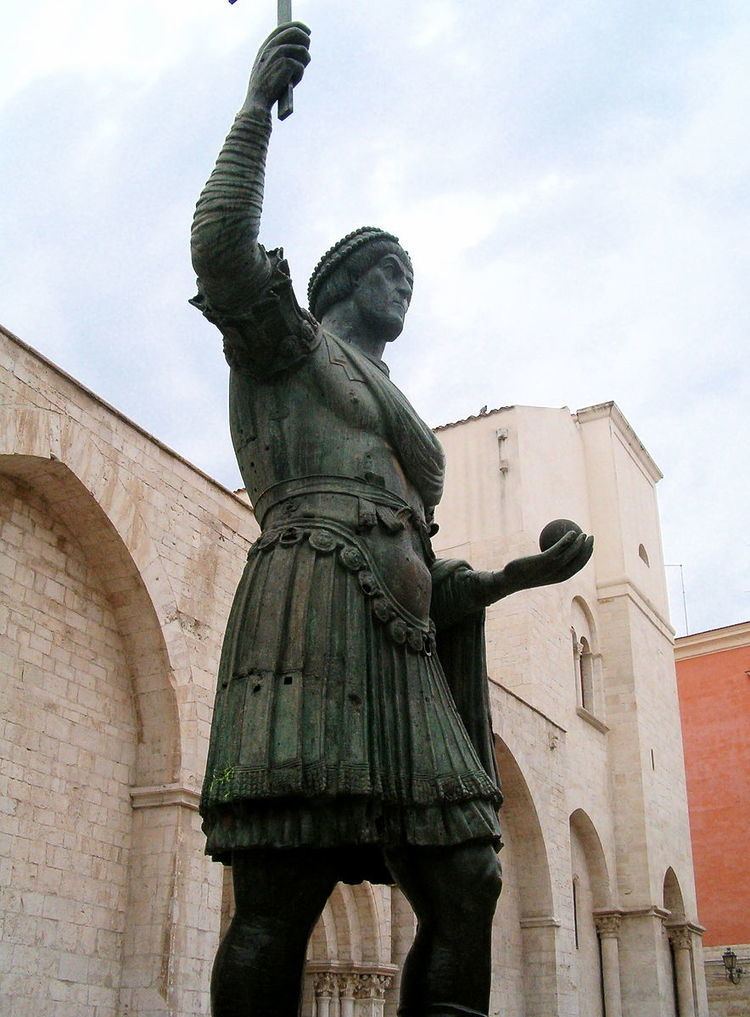 | ||
Address 76121 Barletta, Province of Barletta-Andria-Trani, Italy Hours Open today · Open 24 hoursThursdayOpen 24 hoursFridayOpen 24 hoursSaturdayOpen 24 hoursSundayOpen 24 hoursMondayOpen 24 hoursTuesdayOpen 24 hoursWednesdayOpen 24 hours Province Province of Barletta-Andria-Trani Similar Pinacoteca Giuseppe De Nittis, Barletta Cathedral, Stadio Cosimo Puttilli, Trani Castle, Andria railway station | ||
Barletta puglia italia
The Colossus of Barletta is a large bronze statue of an Eastern Roman Emperor, nearly three times life size (5.11 meters, or about 16 feet 7 inches) and currently located in Barletta, Italy.
The statue reportedly washed up on a shore, after a Venetian ship sank returning from the sack of Constantinople in the Fourth Crusade in 1204, but it is not impossible that the statue was sent to the West much earlier. The identity of the Emperor is uncertain. According to tradition, it depicts Heraclius (reign 610–641 AD); though this is most unlikely on historical and art-historical grounds. More likely subjects are Theodosius II (reign 408–450 AD), who may have had it erected in Ravenna in 439, Honorius (reign 393–423 AD), Valentinian I (r. 364–375), Marcian (r. 450–457), Justinian I (r. 527–565) and especially Leo I the Thracian (r. 457–474).
It is known that a colossal statue was discovered in 1231–1232 during excavations commissioned by Emperor Frederick II in Ravenna, and is not improbable that he had it transported to his southern Italian lands. The first certain news about the statue date however from 1309, when parts of its legs and arms were used by local Dominicans to cast bells. The missing parts were remade in the 15th century.
The statue evidently depicts a bearded emperor, identifiable from his imperial diadem and his commanding gesture that invokes the act of delivering a speech, with his right arm raised, holding a cross. The Emperor wears a cuirass over his short tunic. His cloak is draped over his left arm in a portrait convention that goes back to Augustus. In his outstretched left hand he now holds an orb. His diademed head wears a Gothic jewel, similar to the one worn by Aelia Eudoxia, mother of Theodosius II.
